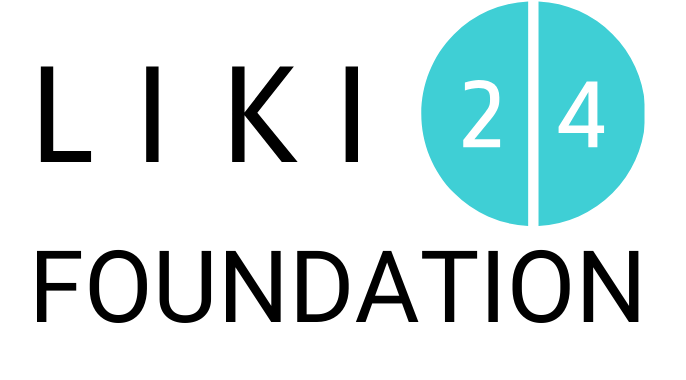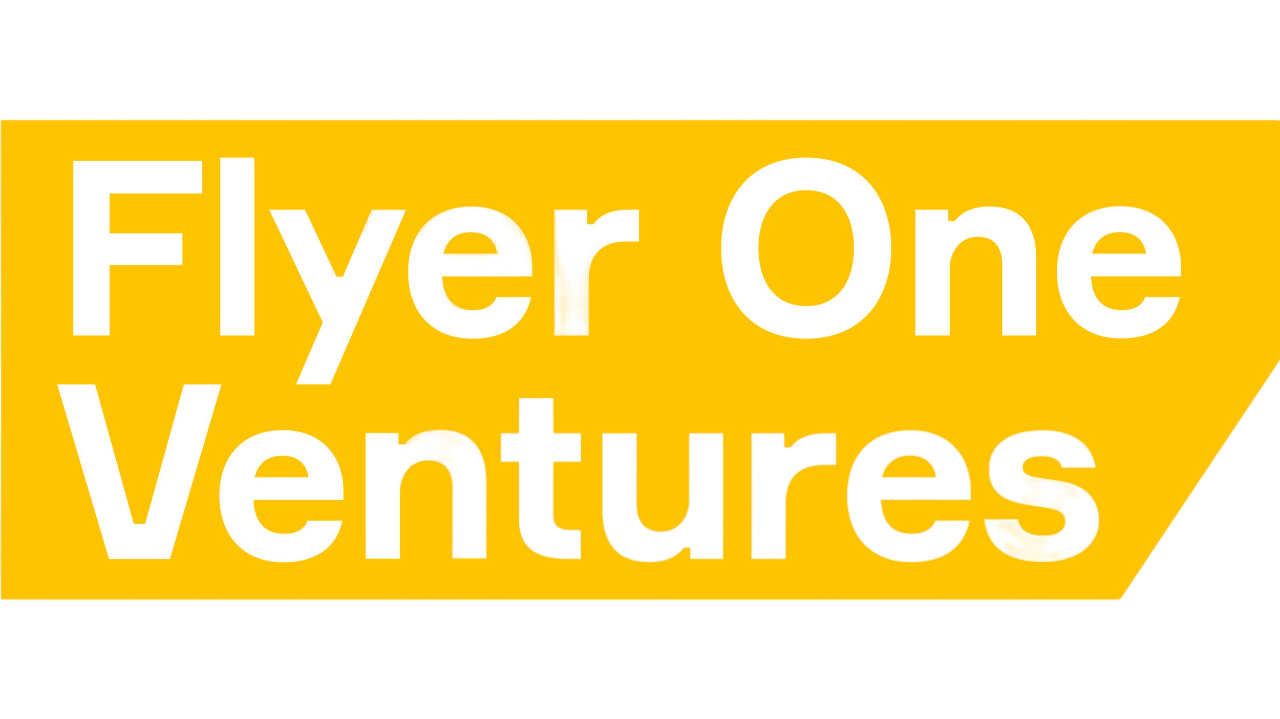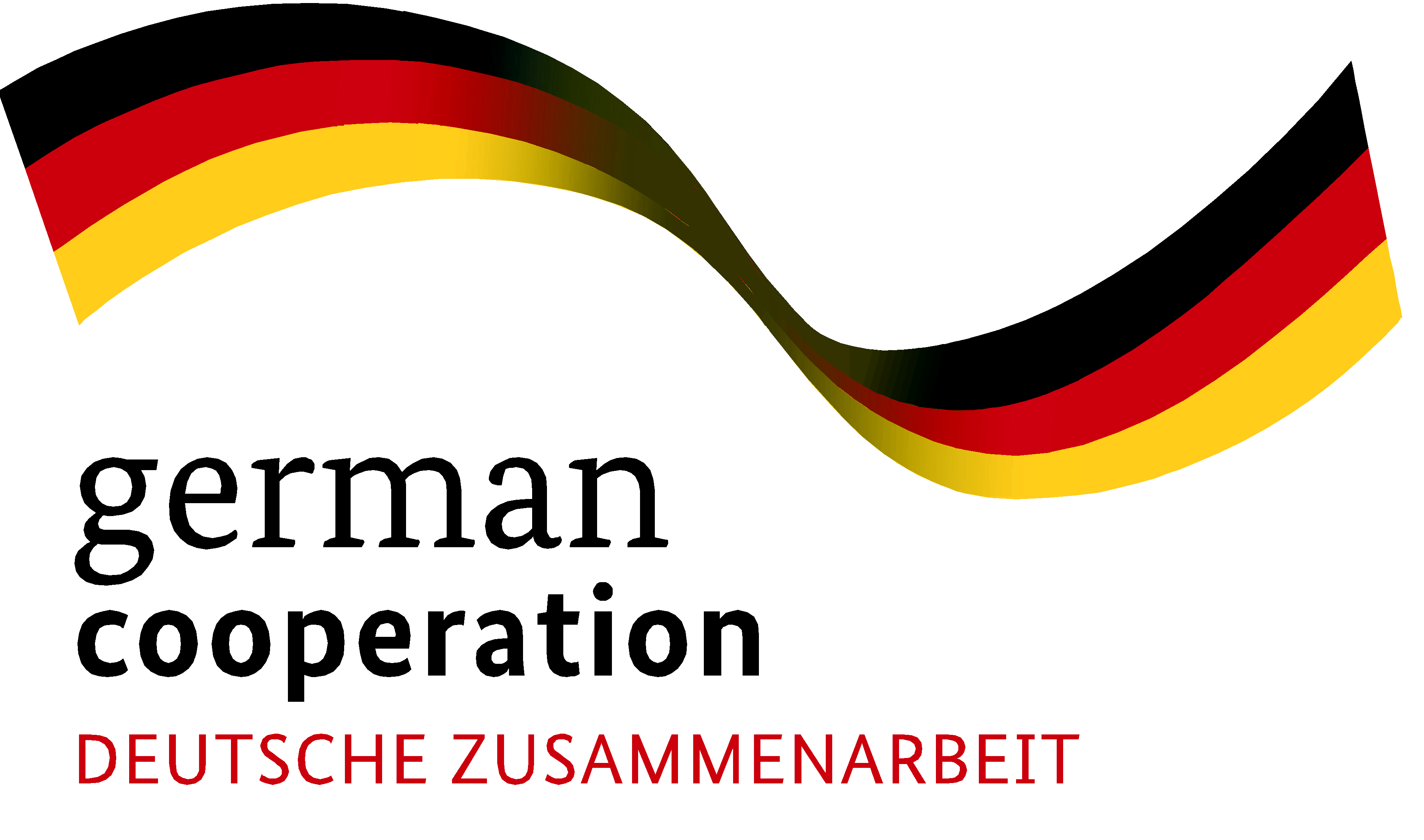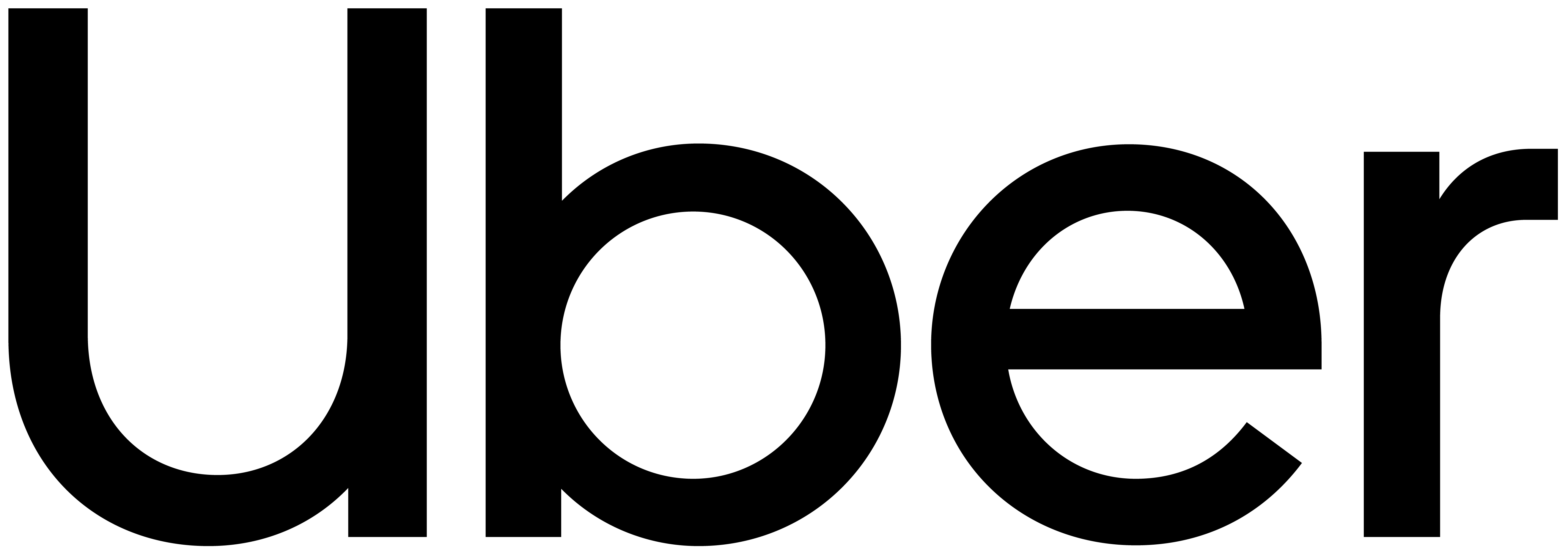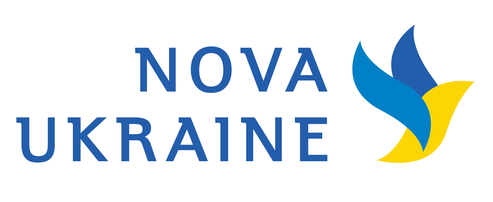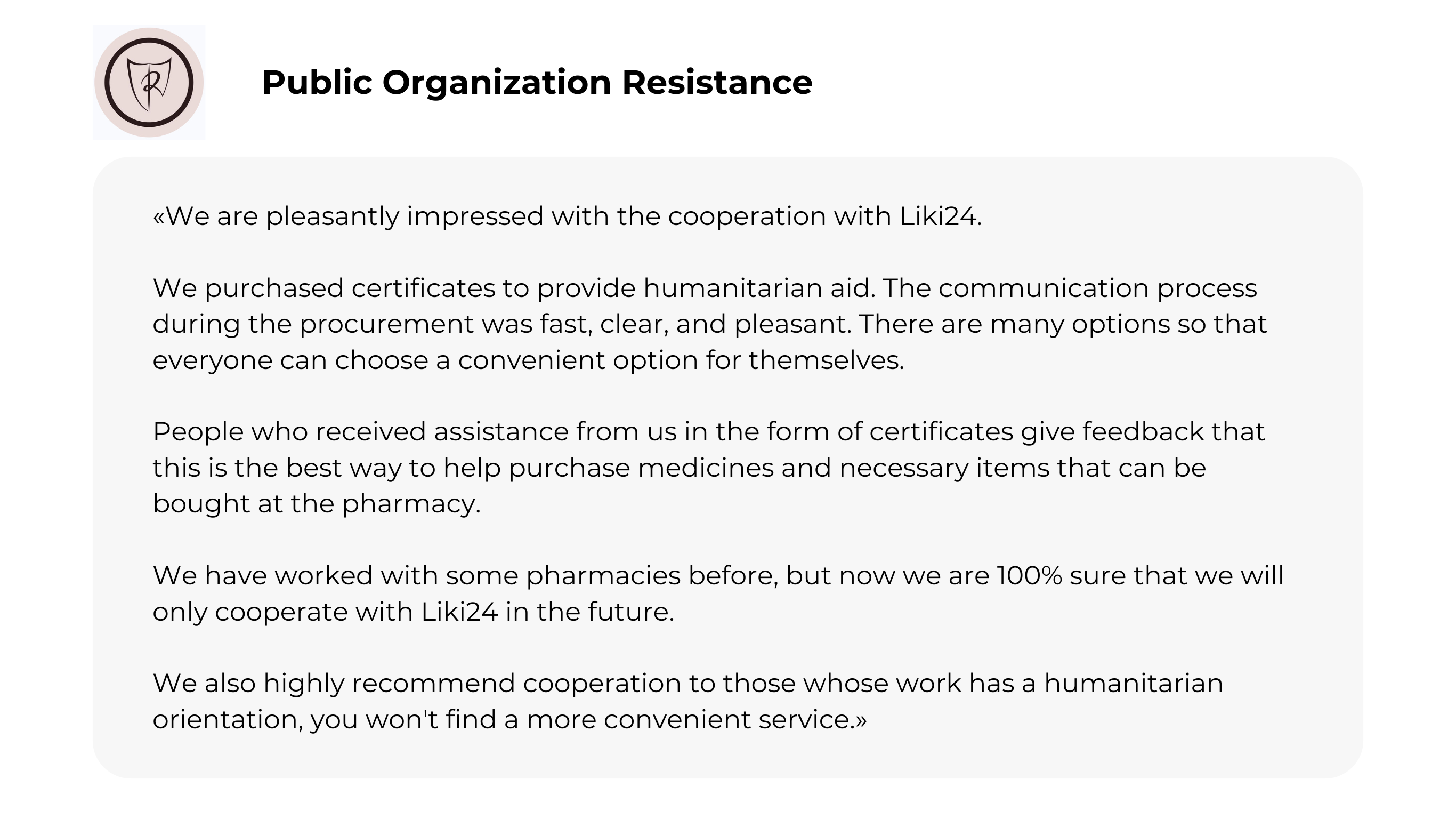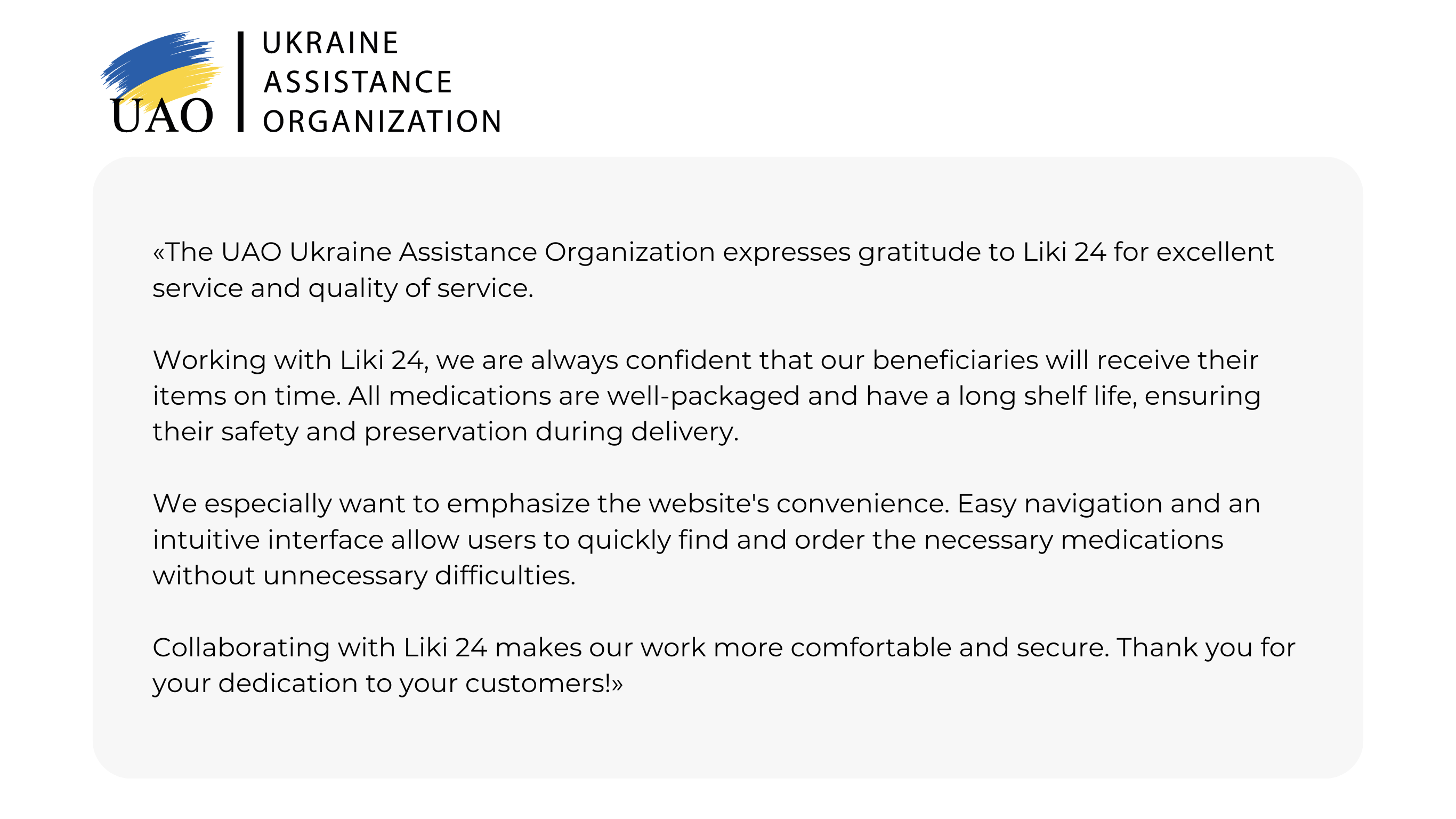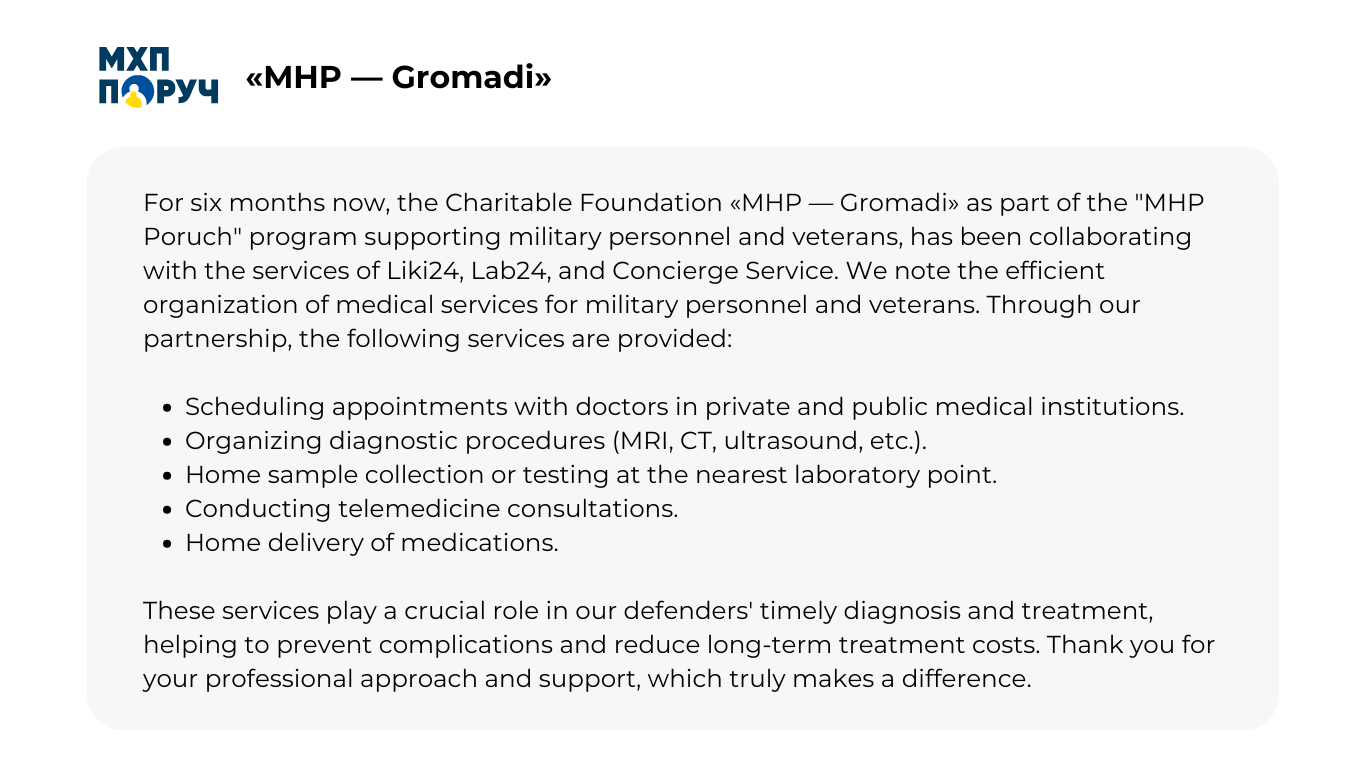If all humanitarian aid sent to Ukraine since February 2022 were loaded into trucks and lined up, the line would stretch 900 kilometers – the distance from Dnipro to Lviv.
Since the beginning of the full-scale war, our partners have sent almost 1.7 million tons of humanitarian aid to the country. Foreign supporters have collected food, medicines, children's clothing, diapers, formula, blankets, heaters, generators, and hundreds of other items for Ukrainians.
Even in the third year of the war, large amounts of goods are still being transported across the border. While the aid is free, transporting, sorting, and delivering it to people comes at a cost.
Liki24 Foundation spent 400,000 UAH sorting medicines during the first four months of 2022. After that, we decided to switch to a digital model. Now, we have zero administrative costs and deliver even more aid than before.
Let us describe this model, how we implemented it, and how other charitable foundations (CFs) and NGOs can replicate our approach.
What's Wrong with Traditional Humanitarian Aid?
Transporting a truck over 800 km, such as from Warsaw to Kyiv, costs €1,400–1,600. The cost keeps increasing due to border blockages, rising fuel prices, and driver shortages.
This approach is complicated and inefficient, as we've experienced firsthand. In February 2022, dozens of international partners and organizations contacted Liki24.com, offering to send trucks loaded with medicines to help Ukrainians.
Naturally, we accepted these shipments with gratitude. We set up a "field" logistics hub in a municipal building in Khmelnytskyi, where we received and unloaded the trucks.
Our pharmacists manually inspected and sorted each shipment. Every box had to be checked for expiration dates, drug names translated, Ukrainian equivalents identified, and the medicines entered into the system.
Only after this rigorous process did the medicines become available on Liki24.com, where Ukrainians could find, order, and receive them for free via Ukrposhta or Nova Poshta.
The final outcome was that international donors helped thousands of families with us. However, there was a downside—we spent 15–20% of the aid's value on rent, human resources, and labor costs.
So, after four months, we decided to radically change our model and adopt a digital system that could deliver the same results — aid for war-affected Ukrainians — but without unnecessary costs.
Sorting center in Khmelnytskyi. Photo: Liki24 Foundation
Transforming Physical Aid into Digital Aid
Most humanitarian aid, especially in the third year of the war, can be purchased in Ukraine. Some items are unavailable locally, so receiving those from abroad is crucial. However, for household items and food that can be bought here, it doesn't make sense to purchase them abroad and transport them.
When foreign partners or volunteers buy goods in their country, it benefits their local producers and economy, while Ukrainians only receive the final goods. If those goods were purchased in Ukraine with donor money, Ukrainian producers would benefit, Ukrainians would receive the goods, and the money would boost our economy.
Liki24 Foundation operates the "Medicine for Ukraine" program thanks to digital donor aid. Since 2022, we've received over €2.5 million, enabling more than 155,000 families to purchase essential medicines.
We utilize the infrastructure of Liki24.com: Ukrainians in need of medicines can find them on the website, which lists 40,000 products from 9,000 pharmacies across Ukraine.
This approach works for almost any category of goods. Digitalization primarily reduces logistical and operational costs. It applies to food, clothing, hygiene products, and equipment. With money instead of physical goods, CFs and NGOs can assist and quickly adapt to changing demands.
Prepare for negotiations with partners. Think about reporting — how will you provide donors with detailed information on using their funds? Compare administrative costs "before" and "after."
Research how other organizations in your category operate. We already had a digital infrastructure, so it was easier for us. However, our case can be replicated without a proprietary platform.
Seek out organizations with these capabilities and propose collaborative projects. For instance, partner with a textile manufacturer for clothing purchases or a household goods marketplace for hygiene products.
Everything volunteers and organizations do in Ukraine provides tremendous support to our people. Our shared goal is to increase that support. Digitalization also promotes the development of the internal market, which isn't possible when aid is limited to imported goods.
How to Negotiate with Partners
CFs and NGOs should consider negotiating with some partners and donors to provide financial assistance instead of sending trucks. Monetary aid is a far more effective model than pre-purchased humanitarian goods.
We showed our donors the 400,000 UAH we spent on warehouse operations in four months and proposed trying a digital aid format.
We agreed that donors would send funds to the foundation's account instead of trucks of medicines. We prepared a platform for detailed reporting so donors could see, in real-time, what we purchased and where we sent it.
Key arguments for partners:
- More aid for the same money: Every donor dollar will go directly toward assistance. The 100,000 UAH monthly logistics cost can now fund medicines for people.
- Supporting both Ukrainians and the economy: The money goes to Ukrainian pharmaceutical companies, which pay taxes and salaries to their employees.
- Adapting to changing needs: Donors don't always have a complete picture of local needs. Unfortunately, this sometimes leads to wasted goods with expired dates or a shortage of urgently needed items.
Different industries may benefit from monetary aid. For example, in our case, people choose the medicines they know and trust. It was more challenging with donated medicines: people had to understand foreign names and unfamiliar dosages.
Of course, not all donors may agree to these terms. Some have specific policies or prioritize supporting their countries, which is understandable.
Every form of assistance is invaluable for our country and people. We are grateful for every unit of humanitarian aid that comes to Ukraine.
